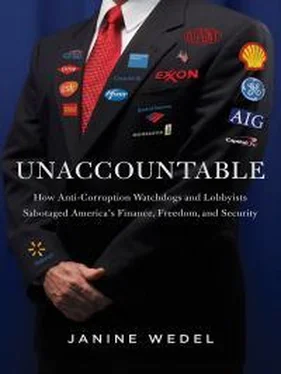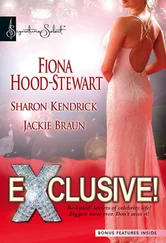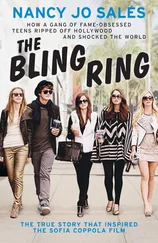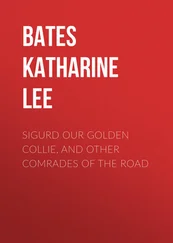103. This is a “Special Prosecutor” in the then-newly created Office of the Special Prosecutor. See: Stephan Faris, “Iceland Prosecutor Investigates, Convicts Bankers for Financial Crimes.” Bloomberg BusinessWeek, September 12, 2013 (http://www.businessweek.com/articles/2013-09-12/iceland-prosecutor-investigates-convicts-bankers-for-financial-crimes).
104. See Robert Wade and Silla Sigurgeirsdóttir, “Iceland’s rise, fall, stabilisation and beyond.” Cambridge Journal of Economics , 2012, vol. 36, pp. 127-144.
CHAPTER 4
1. The subtitle of the “Washington Conference on Corruption” was “Fighting Corruption in Developing Countries and Emerging Economies.” According to the conference brochure, the conference was held on February 22-23, 1999 in the Carlton Hotel (now the St. Regis). The suggested accommodation was the Carlton Hotel.
2. Joshua Cooper Ramo, “The Three Marketeers.” Time , February 15, 1999 (http://content.time.com/time/world/article/0,8599,2054093,00.html).
3. Steven Sampson, “The anti-corruption industry: from movement to institution,” Global Crime, vol. 11, issue 2, 2010, p. 262.
4. The quote is from the conference brochure.
5. Nicholas Stein, “The World’s Most Admired Companies. How Do You Make the Most Admired List? Innovate, innovate, innovate. The winners on this year’s list, compiled by the Hay Group consultancy, tell how they do it.” Fortune Magazine, CNN Money, October 2, 2000 (http://money.cnn.com/magazines/fortune/fortune_archive/2000/10/02/288448/).
6. U.S. Bureau of Labor Statistics, “The Employment Situation: February, 1999.” U.S. Bureau of Labor Statistics, March 5, 1999 (http://www.bls.gov/news.release/history/empsit_030599.txt); U.S. Bureau of Labor Statistics, “Lowest unemployment rates in decades at end of 1999.” TED: The Editor’s Desk, U.S. Bureau of Labor Statistics, March 29, 2000 (http://www.bls.gov/opub/ted/2000/mar/wk4/art03.htm).
7. U.S. Inflation Calculator, “New Inflation Rates with Chart, Graph and Table,” August 3, 2008 (http://www.usinflationcalculator.com/site-information/new-inflation-rates-with-chart-graph-and-table/1000137/).
8. See, for instance, Transparency International, “The Fight Against Corruption: Is the Tide Now Turning?” Transparency International (TI) Annual Report, Berlin, April 1997, pp. 61-63 (http://archive.transparency.org/publications/publications/annual_reports/annual_report_1997); and Johann G. Lambsdorff, “Consequences and Causes of Corruption,” Susan Rose-Ackerman, ed., International Handbook on the Economics of Corruption. Cheltenham, U.K.: Edward Elgar, 2006, p. 3.
TI’s 1997 annual report states (Transparency International, “The Fight Against Corruption: Is the Tide Now Turning?” Transparency International (TI) Annual Report, Berlin, April 1997, p. 63):
The index is a ‘poll of polls.’ It has been prepared using ten sources, including three from the World Competitiveness Report, Institute for Management Development, Lausanne, three from the Political & Economic Risk Consultancy Ltd., Hong Kong, one small survey by Peter Neumann, published in the monthly German magazine, Impulse, No. 4/1994, two assessments by DRI/McGraw-Hill Global Risk Service and by the Political Risk Services, East Syracuse, NY and at last the first incoming replies to the internet service (http://www.uni-goettingen.de/~uwvu/icr.htm) of Göttingen University which gives contributors the possibility for anonymous contributions and also directly approaches employees of multinational firms and institutions.
9. A grade of ten indicates “clean” government, whereas zero denotes widespread corruption. The United States had a corruption score of 7.5 on a scale of 10. See Phillip Kurata, “Transparency International Issues 1999 Corruption Rankings.” Washington File, October 26, 1999 (https://www.fas.org/irp/news/1999/10/991026-corrupt-usia1.htm).
10. Steven Sampson, “The anti-corruption industry: from movement to institution.” Global Crime, vol. 11, issue 2, 2010, p. 273. In this 2010 article, he wrote that these developments had occurred over the past decade.
11. Ibid., pp. 272-273.
12. See Transparency International, “The Fight Against Corruption: Is the Tide Now Turning?” Transparency International (TI) Annual Report, Berlin, April 1997 (http://archive.transparency.org/publications/publications/annual_reports/annual_report_1997) and Transparency International, “Annual Report 1999.” Transparency International (TI), Berlin, 1999 (http://archive.transparency.org/publications/publications/annual_reports/annual_report_1999).
More specifically, these are AIG USA, 1997 and 1999; Arthur Andersen USA, 1997 and 1999; Bank of America USA, 1999; Bechtel USA, 1999; Boeing USA, 1999; Bristol-Myers Squibb USA, 1999; Coopers & Lybrand UK, 1997 (and, later, PriceWaterhouseCoopers UK, USA, 1999); Deloitte & Touche South Africa, 1999; Enron Corporation USA, 1997 and 1999; Exxon USA, 1999; Ford USA, 1999; General Electric Company USA 1997 and additionally Canada, 1999; General Motors USA, 1999; IBM Germany, 1997, and additionally USA, 1999; KPMG the Netherlands, 1999; Lockheed Martin USA, 1999; Merck USA, 1999; Motorola USA, 1999; Raytheon USA, 1999; Shell USA, 1999; Texaco USA, 1999; Pfizer Pharmaceuticals USA, 1997 and 1999; Weil Gotshal & Manges USA, 1999, and Westinghouse USA, 1999.
13. This is in part because “the cost of corruption is divided between a large number of actors and taxpayers,” the analysts write. Monika Bauhr and Naghmeh Nasiritousi, “Why Pay Bribes? Collective Action and Anticorruption Efforts.” Working Paper Series 2011:18, QOG The Quality of Government Institute, December 2011, pp. 1-23. Quotes are from p. 3.
14. Social anthropologist and Financial Times journalist Gillian Tett makes this analogy in “Ready for Your Banking Bulletin?” Financial Times , September 16, 2011. Consider, for instance, the mystique of wisdom and aura of authority enshrouding Alan Greenspan as chairman of the Federal Reserve and the reverence with which politicians and the media received his every pronouncement.
15. Corruption was not always the hot issue it became in the 1990s and beyond, when corruption scholars were exposed to a new set of global influences. The editors of a 1964 article on bureaucratic corruption in The American Behavioral Scientist (Nathaniel H. Leff, “Economic Development through Bureaucratic Corruption, American Behavioral Scientist , 1964, vol. 8, no. 8, p. 8) prefaced it with this statement: “Among scholars the subject of corruption is nearly taboo.” Today, it is highly unlikely that editors of a major scholarly journal would feel the need to justify an article on corruption. For discussion of scholarly approaches to corruption during the Cold War, see Janine R. Wedel, “Rethinking Corruption in an Age of Ambiguity,” Annual Review of Law and Social Science, vol. 8, December 2012, pp. 454-460.
16. Transparency International, “The Fight Against Corruption: Is the Tide Now Turning?” Transparency International (TI) Annual Report, Berlin, April 1997, p. 106.
17. Ibid., p. 13.
18. E-mail from a former TV financial news producer who asked to remain anonymous, March 19, 2012.
19. Ivan Krastev, Shifting Obsessions: Three Essays on the Politics of Anticorruption . Budapest: Central European University Press, 2004, p. 33. See also, for example, Kalin S. Ivanov’s article on “The Limits of a Global Campaign Against Corruption” in Corruption and Development: The Anti-Corruption Campaigns , Sarah Bracking, ed. New York: Palgrave Macmillan, 2007, pp. 32-33.
20. Robert Klitgaard, Controlling Corruption. Berkeley/Los Angeles/London: University of California Press, 1988, p. 69.
Читать дальше












